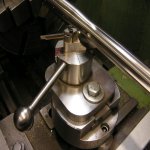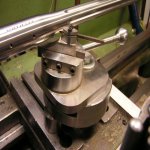- Location
- Western Manitoba
So, when profiling a barrel from a barrel blank - how does one cut a curved area - for guessing and discussion numbers - let's say you are at 1.000" and want to go to 1.200" over four (4) inches. I think I know how to do so in a straight line - but if I wanted it to be convex - without measuring, let's guess at a 12.00" radius. I know it is done - but I do not know how. Any hints?
And we are talking "home guy" in his shop with old school manual lathe - is nothing CNC here, whatsoever.
And we are talking "home guy" in his shop with old school manual lathe - is nothing CNC here, whatsoever.












































































